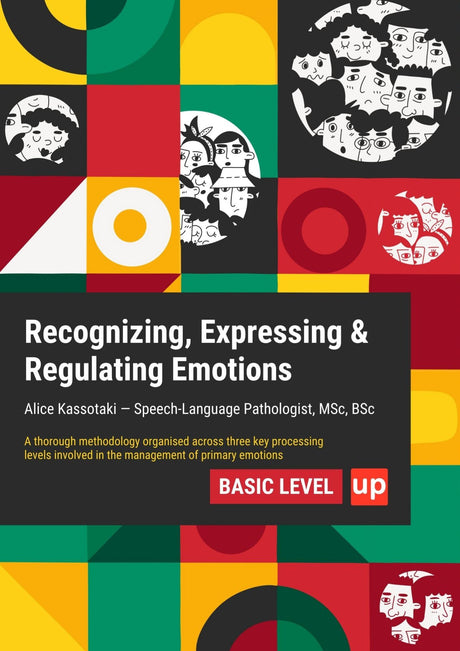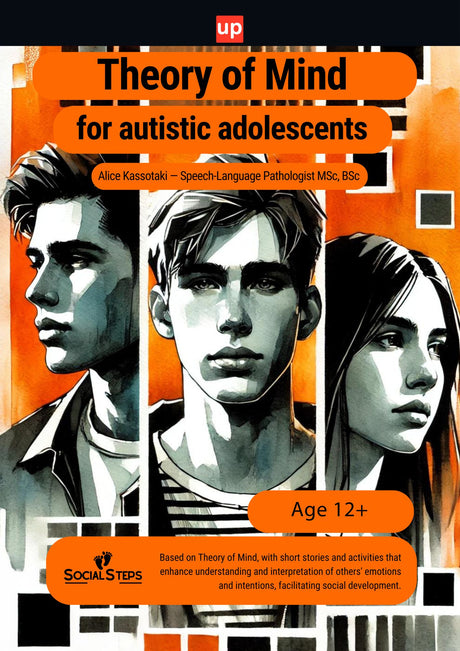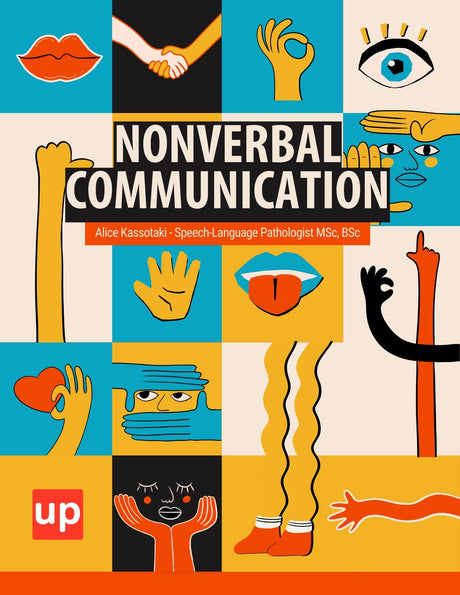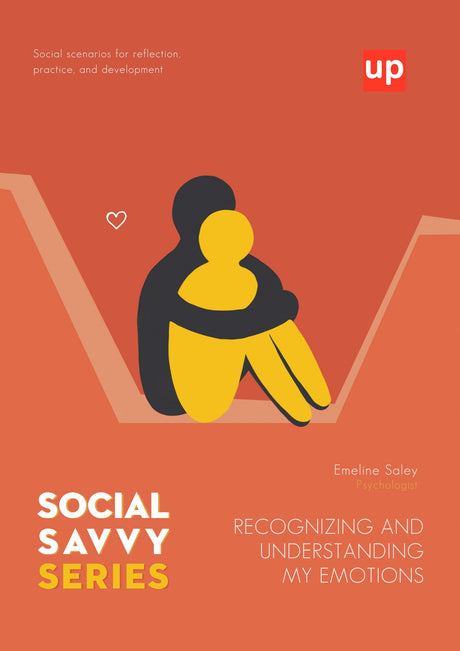In a world saturated with information, our ability to interpret what we see is more critical than ever. It’s not just about having 20/20 vision; it’s about how our brain processes and makes sense of the visual world. The brain's ability to interpret and organize visual input plays a crucial role in this process. This complex cognitive function, known as visual perception, is the unsung hero of our daily lives, influencing everything from finding keys on a cluttered desk to navigating a new city. As we age, actively engaging in visual perceptual activities can become a powerful tool for boosting brain health, sharpening memory, and enhancing our overall daily function.
Key Points
- Visual perceptual skills are essential for daily functioning and cognitive health. They help us interpret and respond to the visual world, impacting everything from reading and writing to navigating environments and completing everyday tasks.
- Engaging in targeted visual perceptual activities can enhance brain plasticity and improve skills like visual memory, spatial awareness, and visual discrimination. Consistent practice supports cognitive reserve and helps maintain independence as we age.
- Occupational therapists play a vital role in assessing and improving visual perceptual skills in adults. Their personalized interventions and guidance empower individuals to overcome challenges and boost their visual processing abilities for better quality of life.
Why Visual Perception is Crucial for Adult Brain Health

Strong visual perceptual skills are a cornerstone of cognitive vitality. Engaging in activities that challenge our visual processing system promotes neuroplasticity—the brain's ability to form and reorganize synaptic connections. This is especially important for adults, as it helps build cognitive reserve, a buffer against age-related cognitive decline. According to the CDC, about 1 in 10 adults aged 45 and older reports experiencing worsening memory loss. By stimulating the neural pathways responsible for visual perception, we can help maintain and even improve cognitive functions like memory, attention, and problem-solving.
The Link Between Visual Skills and Daily Function for Adults
Visual perception is the invisible engine driving countless daily tasks. It allows a chef to quickly identify ingredients on a shelf, a driver to judge distances and react to road signs, and an office worker to scan a spreadsheet for specific data. When these skills are sharp, we move through our day with greater efficiency and confidence. The skills needed for these everyday activities—such as visual discrimination, spatial awareness, and visual memory—are essential for independence and success, and strengthening them can make daily tasks easier and more manageable. Conversely, weaknesses in visual processing can lead to frustration, errors, and a general feeling of being overwhelmed, impacting everything from assembling furniture to following a complex recipe.
Understanding Visual Perception: More Than Just "Seeing"
It’s a common misconception that visual perception is simply about how clearly we see. In reality, visual acuity is just the starting point. Visual perception refers to the brain’s ability to receive, interpret, and act upon visual information from the environment. It’s the “thinking” part of seeing, turning raw light signals into meaningful concepts and actionable plans. This process depends on various skills working together to interpret and respond to visual information.
Deconstructing the "Visual System" for Adults
For adults, the visual system is a highly integrated network. It begins with the eyes capturing data, but the real work happens in the brain. Multiple brain regions collaborate to analyze shapes, colors, motion, and spatial relationships. This visual processing allows us to recognize a friend’s face in a crowd, read a book, or appreciate a piece of art. It’s a dynamic, active process that is fundamental to learning, memory, and interaction with our surroundings. The brain can also complete visual information, enabling us to identify objects or words even when they are only partially visible.
The Pillars of Visual Perceptual Skills: Your Brain's Toolkit
Visual perception is not a single skill but a collection of distinct yet interconnected abilities. These are the tools our brain uses to make sense of the visual world. Key skills include visual discrimination, figure-ground perception, visual memory, form constancy, and spatial awareness. Each plays a unique role, and strengthening them through targeted visual perception activities—specific exercises designed to enhance visual processing, motor skills, and learning abilities—can lead to significant improvements in cognitive performance and daily life.
Core Visual Perceptual Skills & Engaging Activities for Adults
Targeting specific visual perceptual skills with engaging exercises can yield remarkable benefits for brain health. These activities can also enhance learning by strengthening visual processing and memory.
Visual Discrimination: Noticing the Nuances in Your World
Visual discrimination is the ability to detect differences and similarities in objects based on size, shape, color, and orientation. It’s crucial for tasks like reading, sorting mail, or picking the correct key from a ring.
- Activity: Advanced “Spot the Difference.” Engage with complex “spot the difference” puzzles online or in books. These challenge you to identify subtle variations, honing your attention to detail.
- Activity: Sorting and Categorizing. Practice activities that require you to sort items, such as organizing a toolbox by screw size, sorting a collection of buttons by shade and shape, or categorizing digital photos based on subtle content differences.
Visual Figure-Ground: Finding What You Need in the Clutter
Visual figure-ground perception allows you to distinguish a specific object or piece of information from a busy background. This skill is essential for finding a specific spice in a crowded pantry or locating a name in a directory.
- Activity: Jigsaw Puzzles. Complex jigsaw puzzles with intricate patterns force your brain to isolate shapes and colors from the surrounding “noise” of other pieces.
- Activity: Hidden Object Games. Games like “Where’s Waldo?” or digital hidden object adventures use detailed pictures filled with many items, requiring you to identify specific objects within busy scenes. These picture-based games are excellent for developing visual discrimination and figure-ground skills.
Visual Memory: Remembering What You See, When You Need It
Visual memory involves recalling visual information. This includes both short-term recall (remembering a phone number you just saw) and long-term memory (recognizing a landmark). It’s a key component of overall memory function.
- Activity: The Tray Game. Place several distinct items on a tray, study them for 30 seconds, then cover them and try to list as many as you can remember. This activity helps strengthen short term memory by training your ability to temporarily hold and recall visual information. Increase the number of items for a greater challenge.
- Activity: Route Recall. After driving or walking a new route, try to sketch a map from memory, including key turns and landmarks.
Visual Form Constancy: Recognizing Objects in Any Guise
Visual form constancy is the ability to recognize an object even when its size, orientation, or presentation changes. This skill allows you to read different fonts or recognize your car from a different angle. It also helps you form letters in various styles, such as handwriting or printed text, and recognize them regardless of their orientation or appearance.
- Activity: Tangrams or Pattern Blocks. Use these geometric puzzles to recreate a shape shown on a card. This requires you to mentally rotate and manipulate shapes, reinforcing visual form constancy.
- Activity: Logo Identification. Look at stylized or partial logos and try to identify the company, training your brain to recognize forms in various states.
Visual Spatial Relationships: Navigating Your Environment and Ideas
This skill involves understanding how objects are positioned in space relative to each other and to yourself. It’s critical for parking a car, arranging furniture, or understanding charts and graphs. Spacing is also a key aspect of visual spatial skills, as it helps with organizing written work, arranging objects, and ensuring proper distances between elements for better readability and organization.
- Activity: 3D Puzzles and Models. Assembling 3D puzzles, architectural models, or complex LEGO sets directly engages your understanding of spatial relationships.
- Activity: Map Navigation. Instead of relying solely on GPS voice commands, follow a route by looking at a map on your phone or a physical map. This forces you to translate a 2D representation into a 3D world.
Visual-Motor Integration: Bridging Sight and Action with Precision
Often called hand-eye coordination (also referred to as eye hand coordination), visual-motor integration is the ability to sync visual information with motor movements. It’s essential for writing, typing, playing sports, and crafting.
- Activity: Drawing and Sketching. Copying a complex drawing or sketching an object from life requires constant feedback between your eyes and your hand, providing excellent training.
- Activity: Ball Tossing. Tossing and catching a ball, even just against a wall, refines the brain’s ability to predict trajectories and coordinate a motor response.
Enhancing Supporting Visual Skills for Optimal Function

Beyond the core skills, other visual abilities provide critical support for seamless perception. Visual motor skills, which involve the integration of visual information with motor output for tasks like handwriting and coordination, are an important supporting skill for daily function.
Oculomotor Control and Visual Tracking: Smooth and Efficient Eye Movement
Oculomotor skills govern how our eyes move, track objects, and shift focus. Smooth tracking is essential for reading without losing your place and for following a moving object in sports. Activities like maze puzzles or even reading text can help train these eye movements.
Visual Closure: Seeing the Whole Picture from Fragments
Visual closure is the ability to identify an object even when only parts of it are visible. Your brain “fills in the blanks.” This is useful for quickly recognizing objects in low light or when they are partially obstructed. Puzzles where you must identify an object from an incomplete picture are excellent for this. For example, recognizing a partially visible word in a sentence or on a sign is a common visual closure activity.
Occupational Therapy and Visual Skills: Professional Support for Adults
The Role of Occupational Therapists in Visual Perceptual Development
When it comes to improving visual perception in adulthood, occupational therapists are invaluable allies. These professionals specialize in helping adults enhance their visual perceptual skills, which are crucial for everything from reading and writing to navigating busy environments and managing daily tasks. Occupational therapists understand that visual perception is more than just seeing clearly—it’s about how the brain interprets and organizes visual information to make sense of the world.
Occupational therapists begin by assessing a range of visual perceptual skills, such as visual discrimination (noticing subtle differences between objects), visual memory (recalling what you’ve seen), visual figure ground (finding an object in a busy background), visual closure (recognizing a whole object from only parts), and visual spatial skills (understanding how objects relate to each other in space). They may use standardized tests and real-life scenarios to pinpoint strengths and areas for improvement.
Once they’ve identified specific challenges, occupational therapists design personalized intervention plans. These plans often include engaging visual perceptual activities that target skills like visual sequential memory—the ability to remember the correct order of visual information, which is essential for tasks like spelling words or recalling phone numbers. They also work on visual attention, helping adults focus on relevant visual input while filtering out distractions, a skill that’s vital for reading, written work, and sorting items in a cluttered space.
Visual spatial relations and spatial awareness are also key areas of focus. Occupational therapists use activities that help adults understand the position and orientation of objects, which supports everything from copying work to navigating through crowded spaces. Form constancy—the ability to recognize shapes, letters, or objects regardless of changes in size, orientation, or context—is another critical skill, especially for reading different fonts or identifying familiar objects in new settings.
Visual motor integration, or the coordination of visual information with motor output, is essential for tasks like letter formation, drawing, and even assembling furniture. Occupational therapists use targeted exercises to strengthen this connection, improving both accuracy and efficiency in functional tasks.
Throughout therapy sessions, occupational therapists provide guidance, feedback, and encouragement, helping adults develop, learn, and grow. By improving visual perception skills, adults can enhance their ability to read, write, solve math problems, and perform everyday activities with greater confidence and independence.
Whether you’re struggling with visual memory, have difficulty focusing on a busy background, or want to improve your spatial relations, occupational therapists offer expert support tailored to your unique needs. Their holistic approach not only addresses specific visual perceptual challenges but also empowers adults to achieve their goals and enhance their quality of life. If you’re looking to improve visual perception and boost your brain’s ability to process visual information, partnering with an occupational therapist can be a transformative step forward.
Integrating Visual Perceptual Training into Your Adult Routine

The key to lasting cognitive benefits is consistency.
Similar visual perceptual training routines are also used by students to support learning and academic performance.
Making it a Habit: Consistency is Key
Dedicate 10-15 minutes each day to a chosen activity. Pairing it with an existing habit, like doing a puzzle with your morning coffee, can help solidify the routine. A 2021 study noted a significant link between age and a decline in visual perceptual skills, underscoring the need for consistent practice to maintain function.
Leveraging Everyday Opportunities for Brain Boosts
You don’t always need formal games. Challenge yourself to mentally list all the red cars you see on your commute (visual discrimination and memory), or try to remember the sequence of objects you pass during a walk, such as the order of shops or landmarks (visual memory for sequence). Alternatively, find all the words on a sign that contain the letter “e” (figure-ground).
Beyond Formal Activities: The Power of Mindful Visual Engagement
Take a “visual walk.” Instead of just walking, mindfully observe your surroundings. Notice the texture of tree bark, the shapes of clouds, and the patterns in architecture. Pay attention to sequences in your environment, such as repeated patterns or ordered elements, to further engage your visual processing skills. This turns a simple activity into a rich, brain-boosting experience.
Beyond Activities: Holistic Support for Your Visual Perceptual Health
Activities are just one piece of the puzzle. A holistic approach provides the best foundation.
Lifestyle Factors for Optimal Brain and Eye Health
A balanced diet rich in antioxidants, regular physical exercise to improve blood flow to the brain, and adequate sleep are all fundamental for supporting both your visual and cognitive health. Protecting your eyes from UV rays and reducing screen-time-related eye strain also contribute to better visual function.
When to Consider Professional Guidance
If you notice significant or sudden changes in your visual processing, or if challenges interfere with your daily life, it's wise to consult a professional. An optometrist specializing in vision therapy can design a personalized program. For a detailed analysis, a professional may use a standardized assessment like the Test of Visual Perceptual Skills (TVPS) to pinpoint specific areas of weakness and guide targeted intervention.
Conclusion: A Brighter, Sharper Future for Your Brain
Visual perception is a powerful, dynamic brain function that we can actively strengthen throughout our lives. By incorporating engaging visual perceptual activities like puzzles, drawing, and mindful observation into our routines, we do more than just pass the time. We are building cognitive resilience, enhancing our daily function, and investing in long-term brain health. Start small, stay consistent, and take an active role in keeping your mind as sharp and vibrant as the world you see.
Frequently Asked Questions (FAQ)
What are visual perceptual activities for adults?
Visual perceptual activities for adults are exercises designed to improve the brain's ability to interpret and process visual information. These activities target skills such as visual memory, visual discrimination, spatial awareness, and visual-motor integration, helping to maintain or enhance cognitive function and daily performance.
How can visual perceptual skills impact daily life?
Visual perceptual skills affect many everyday tasks, including reading, writing, driving, cooking, and navigating environments. Strong skills enable better attention to detail, improved memory recall, and more efficient coordination between what you see and how you respond physically.
Can adults improve their visual perception skills?
Yes, adults can improve their visual perception skills through targeted practice and consistent engagement in visual perceptual activities. Neuroplasticity allows the brain to adapt and strengthen these abilities at any age.
What role do occupational therapists play in improving visual perception?
Occupational therapists assess individual visual perceptual strengths and challenges and create personalized intervention plans. They guide adults through activities that enhance visual processing, memory, spatial relations, and motor coordination to improve overall function and quality of life.
Are there simple visual perceptual activities I can do at home?
Absolutely. Activities like puzzles, “spot the difference” games, drawing, sorting objects, and mindful observation walks can all help improve visual perceptual skills. Consistency and variety are key to maximizing benefits.
When should I seek professional help for visual perceptual difficulties?
If you notice persistent challenges with tasks involving visual processing—such as difficulty reading, recognizing objects, or navigating spaces—or if these issues affect your daily life, consulting an occupational therapist or vision specialist is recommended for proper assessment and support.
Original content from the Upbility writing team. Reproducing this article, in whole or in part, without credit to the publisher is prohibited.
References
-
American Occupational Therapy Association. (2020). Occupational therapy’s role in vision rehabilitation. Retrieved from https://www.aota.org
-
Cicerone, K. D., et al. (2019). Evidence-based cognitive rehabilitation: Updated review of the literature from 2003 through 2008. Archives of Physical Medicine and Rehabilitation, 90(12), 222–224.
-
Developmental Disabilities Research Reviews. (2012). Visual perceptual skills and their impact on learning and daily function.
-
Hanrahan Health. (2023). Visual perception in everyday places. Retrieved from https://hanrahanhealth.com.au/blog/visual-perception-in-everyday-places
-
Hattiesburg MS Specialty Eye Care. (2023). Enhancing visual perceptual skills: Strategies for development. Retrieved from https://bellevuesec.com/enhancing-visual-perceptual-skills-strategies-for-development
-
The OT Toolbox. (2023). Visual perceptual skills. Retrieved from https://www.theottoolbox.com/visual-perceptual-skills
-
Develop Learn Grow. (2023). 42 easy visual perceptual activities that enhance learning. Retrieved from https://developlearngrow.com/visual-perceptual-activities
-
Centers for Disease Control and Prevention (CDC). (2022). Cognitive decline in adults. Retrieved from https://www.cdc.gov
-
Upbility Writing Team. (2024). Visual perceptual activities for adults: Enhancing brain health and daily function.









